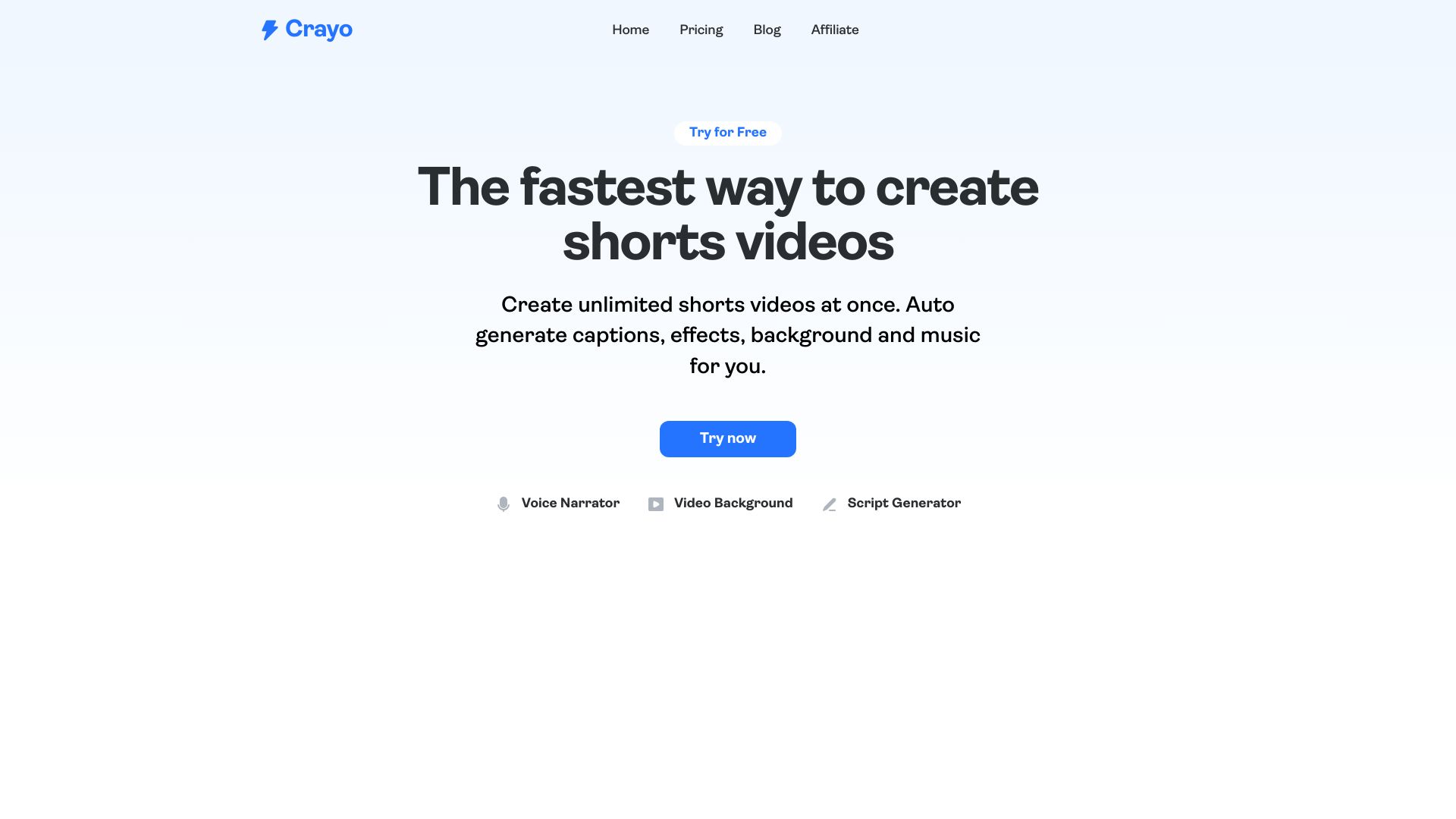- Home
- AI Script Writing
- Crayo

Crayo
Open Website-
Tool Introduction:Turn prompts into viral TikToks—auto captions, effects, music; no edits.
-
Inclusion Date:Oct 21, 2025
-
Social Media & Email:
Tool Information
What is Crayo AI
Crayo AI is an AI-powered short-form video generator built to create viral-ready TikTok clips in seconds. By turning a simple prompt into a complete video, it automates labor-intensive steps such as captions, visual effects, backgrounds, and music selection. The platform streamlines ideation and editing, so marketers, creators, and small businesses can publish more often without mastering complex tools. With a focus on platform-native formats and engaging pacing, Crayo AI helps teams test ideas quickly and ship polished videos at scale.
Crayo AI Main Features
- Prompt-to-video creation: Convert a written idea or brief into a fully composed short video automatically.
- Auto captions: Generate on-screen captions synchronized to the content to boost clarity and watch time.
- AI effects and transitions: Apply relevant visual effects that match the prompt and keep viewers engaged.
- Smart backgrounds: Produce or select backgrounds aligned with the theme, without manual compositing.
- Music generation/selection: Add fitting music tracks based on mood and style described in your prompt.
- Rapid iteration: Regenerate or tweak outputs in seconds to test multiple creative angles.
- Editing-free workflow: Eliminate complex timelines and manual cuts for a faster path from idea to post.
- Short-form optimized: Outputs tailored for TikTok and similar vertical video platforms.
Who Should Use Crayo AI
Crayo AI is ideal for TikTok creators, social media managers, influencers, and small brands that need steady volumes of short videos without advanced editing skills. Agencies and startups can use it to prototype campaigns, while eCommerce sellers, app marketers, and local businesses can quickly produce product teasers, promos, and trend-based clips that align with platform norms.
How to Use Crayo AI
- Sign up and open a new project for TikTok or short-form video.
- Enter a clear prompt describing the message, tone, and desired visual style.
- Generate a first draft with auto captions, effects, backgrounds, and music.
- Review the preview and refine by adjusting the prompt or selecting alternate assets.
- Regenerate as needed, then export the final video and publish to TikTok or other platforms.
Crayo AI Industry Use Cases
A DTC brand can spin up product reveals with energetic captions and beat-ready effects, reducing turnaround from days to minutes. A mobile app team can test multiple ad hooks by prompting different backgrounds and music moods to find the best-performing clip. A local café can produce trend-inspired videos highlighting seasonal specials, relying on auto captions and effects to keep content consistent and on-brand.
Crayo AI Pros and Cons
Pros:
- Accelerates short-form production from prompt to publish.
- Removes the need for manual editing and advanced software.
- Built-in captions, effects, backgrounds, and music streamline creative work.
- Enables fast A/B testing with quick iterations and variations.
- Helps non-editors maintain a consistent, platform-native style.
Cons:
- Creative control may feel limited compared to full manual editing.
- Generated assets might require fine-tuning to match strict brand guidelines.
- Best suited for short, TikTok-style videos—not long-form productions.
- Output quality can vary based on prompt clarity and input detail.
Crayo AI FAQs
-
Does Crayo AI require video editing experience?
No. It automates editing steps like captions, effects, backgrounds, and music, so beginners can produce polished clips.
-
Can I refine the generated video?
Yes. You can adjust your prompt or choose alternate generated elements to quickly iterate on the result.
-
Is it only for TikTok?
Crayo AI is optimized for TikTok-style short videos, and the outputs can be repurposed for other short-form platforms.
-
How can I improve results?
Use specific prompts with clear goals, tone, and visual guidance, then iterate to compare variations.


